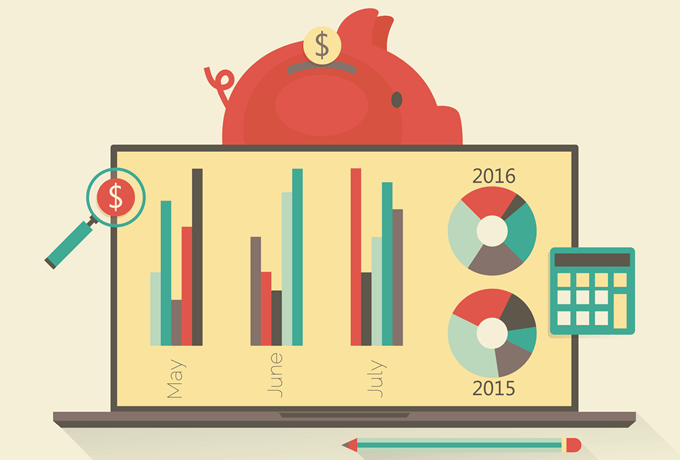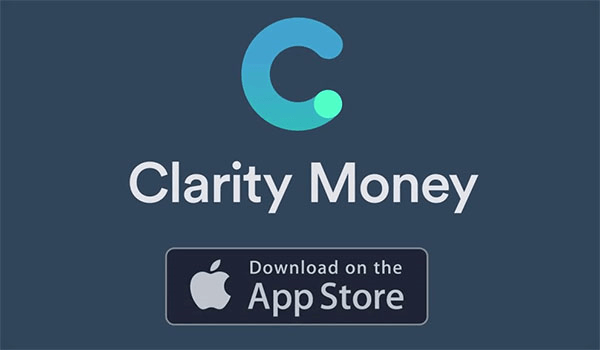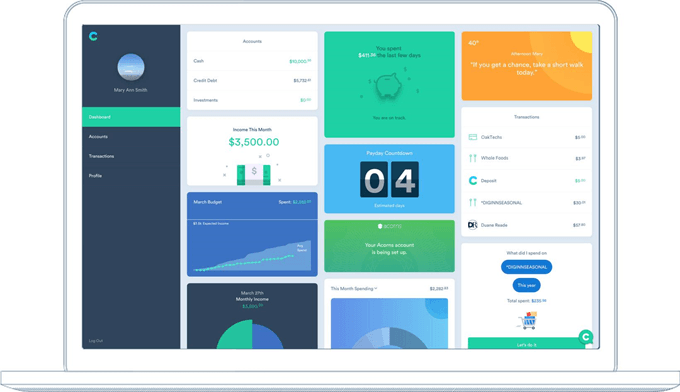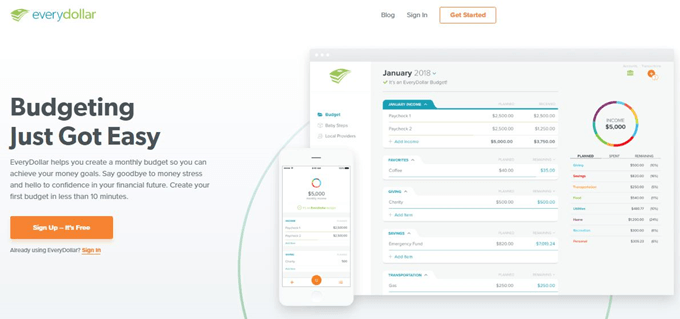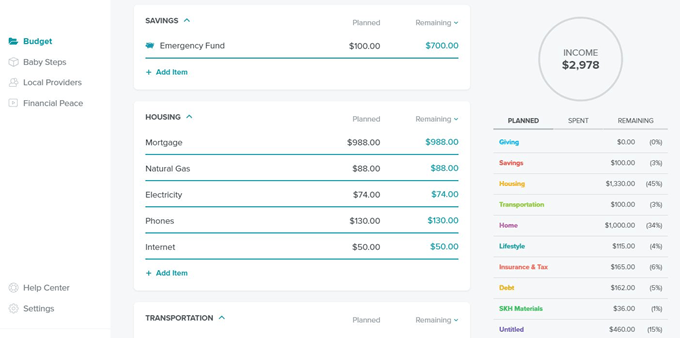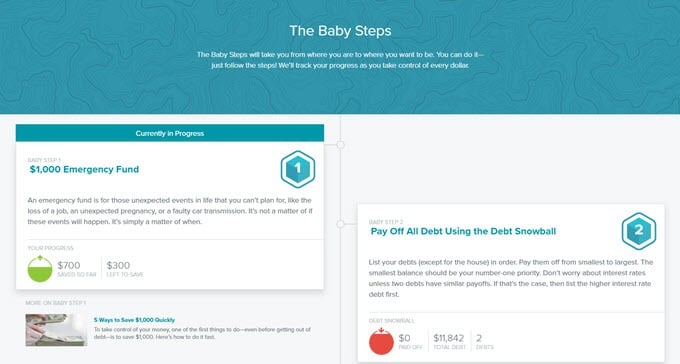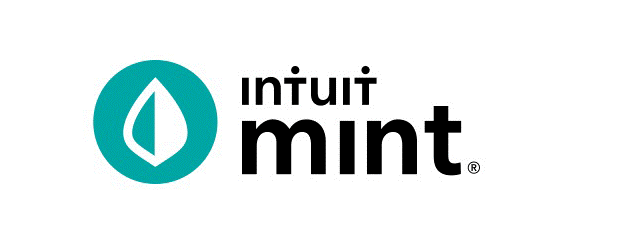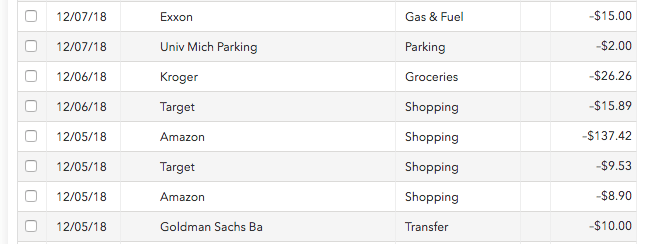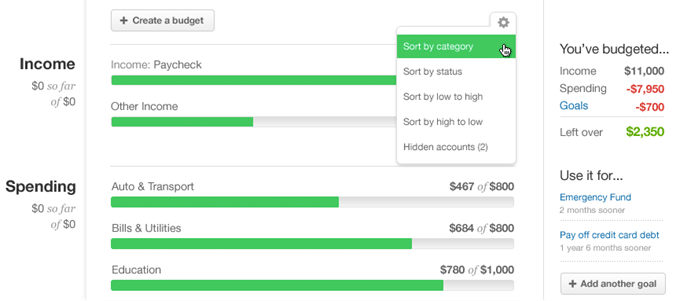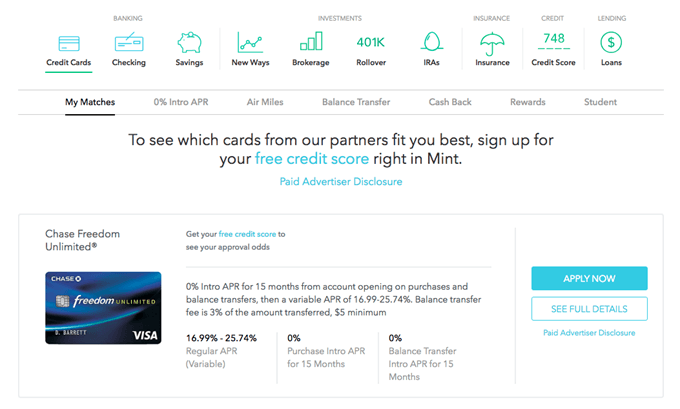ClarityEveryDollarMint
But first, maybe you’re wondering why these apps are useful and what makes them more applicable today than traditional methods.
Why Go Digital
According to ABA Banking Journal, two-thirds of Americans prefer digital banking channels to traditional channels (e.g., bank branches, ATMs). In our digital age, keeping track of cash and paper records like bills and receipts is probably feels less natural and more burdensome to modern consumers.It does! And there are several free and subscription-based apps available that codify the knowledge and manual work of budgeting and expense tracking tasks so you can accomplish them with ease–including Clarity, EveryDollar and Mint.But as with any digitized service offering today, there are some things you should consider when choosing the technology you use to manage your finances, because each app has its own strengths and weaknesses. Let’s look at what each of the apps we’re discussing brings to the table.
Clarity – For Web and Mobile
Maybe you already have a good grasp of what your regular expenses are; you commit a standard amount to savings each month; you know not to spend over a certain amount of your income before your next paycheck, ensuring you’re prepared for the unexpected. By all standards, you may not need a budget. What you do need is a way to track your expenses. Here’s where an app like Clarity comes in. Acquired by Goldman Sachs in 2018, Clarity offers you an advanced way to manage your multiple bank accounts, bills and other transactions in one place, giving you a single pane of glass through which you can view your financial history as well as see where and how your money is moving as it enters and leaves your accounts. Here’s the kind of clarity it provides:
An overview of your financial status, including cash, credit debt and investmentsHow much you’ve spent in the last few daysRecent income flowHow much you have saved in your Marcus account from Goldman SachsHow many days until you get paidA monthly budget (unadjustable; more of an overview to help you plan ahead)An interactive feature to explore where and how you’re spending money Graphs and charts to visualize your financial dataRecurring expenses to help you understand where your money is going The ability to cancel subscriptions or services you pay for Free credit score! (Always a nice extra)An overview of all your linked credit cards
You can dig deeper into most if not all these features to get a more detailed perspective of your finances and do some serious expense tracking. With so many features and functions, Clarity will require some time and effort to understand the information the app provides. But when compared with gathering all this information manually from across multiple sources, it greatly reduces the time required.That’s all great. So, what’s the downside? It’s almost as if Clarity’s strength is its weakness: information overload. While the Clarity dashboard is thorough, it can be a lot to take in, which takes some getting used to. Due to the amount of information displayed in several charts and graphs or contained in several widgets–all in one place–it’s inevitable you’ll end up homing in on three or four specific sections of the dashboard and neglecting the rest. Another unfortunate issue that seems to occur with Clarity is the delay in information streaming between your bank accounts and the app. Overall, it does a decent job keeping track of finances and displaying the correct cash flows, but there have been cases where it takes a couple days for Clarity to be in sync with your bank account. If you aren’t keeping track of your bank accounts directly, this could lead you to believe you have more or less money than you actually do.Despite these small caveats, Clarity provides plenty of options for where to focus your attention in expense tracking. If you treat the app as an expense tracking tool to enhance rather than coordinate financial management with, the benefits are great for the average person who doesn’t have time or care to get into the weeds or be overly meticulous with budgeting.
EveryDollar – For Web and Mobile
Are you a shopaholic? Do you struggle staying organized? Maybe one, or both, of these traits is making it difficult to pay bills and purchase necessities on a month-to-month basis. Just tracking expenses won’t keep you in line. You need something to direct your actions: a budget. Then again, maybe you’ve already tried this. “It doesn’t work. I can’t stick to it,” you say. You’re not alone. A Gallup poll found only one in three Americans keep a long-term budget. But with an app like EveryDollar, budgeting can be simplified, even made enjoyable believe it or not, which can put you in that 33 or so percent of Americans who diligently plan their finances. Soon enough, you’ll be kicking bad habits of overspending and be watching your savings grow.EveryDollar is perfect for anyone new to budgeting, but it’s also a great tool for the Excel pros who want details. It provides a templated budget that’s smart enough to remember recurring expenses and input them for you each month, plus calculate increases or decreases in savings, investments and debt based on input values. Additionally, you can tweak the template to include more unique budget items that aren’t already defaults. Essentially, EveryDollar takes Excel’s equations and cells and puts them behind a modern interface that’s easy for anyone to understand. The beauty of the app is all you have to do is point and click and enter data inputs. Moving on from the budgeting feature, what’s nice about EveryDollar is it’s more than tool–it’s a knowledge base. Developed by finance guru Dave Ramsey’s namesake company, Ramsey Solutions, EveryDollar embodies all the best practice from Ramsey’s years of experience in financial planning and budgeting. Under the Baby Steps section of the app, EveryDollar provides a visual, phased journey of goals you can follow, starting with Baby Step 1, Emergency Fund, and ending with Baby Step 7, Build Wealth and Give. Again, the app is smart enough to keep track of where you are on this journey based on what it processes from your budget. That is, once you reach the savings goal for an emergency fund in Baby Step 1, EveryDollar will automatically move you forward to Baby Step 2, Pay Off All Debt Using the Debt Snowball. Additionally, there are tips included for each step to make your journey towards financial well-being a little easier. Moving deeper into this idea that EveryDollar is more than just a budget and also a knowledge base, a third feature offers tools to help you find local providers for insurance, tax services, retirement and investing, and buying and selling a home. What’s great about EveryDollar is the advanced but intuitive budget feature with the huge plus of being a knowledge base that guides you towards financial security, rather than just leaving you to figure things out on your own. So, what’s the downside? Something as simple as expense tracking ends up costing you extra if you want it. Just to connect your bank accounts and credit cards, as well as receive support, will cost you $10.75 a month, or $129 a year, and not for the depth and breadth of expense tracking you get with Clarity for free. Then again, boosting your membership to Plus with EveryDollar could be worth it if you’d rather not keep two apps–one for expense tracking, one for budgeting–and would prefer to keep everything centrally located in one very smart and easy-to-understand app.
Mint – For Web and Mobile
As you delve into the practice of digitally managing finances, you’ll quickly come to understand much of the process is a matter of preference when it comes to how comfortable you are with the robustness, or lack thereof, a tool offers. But if you’re looking for the ultimate everything-in-one app to manage your budget and expense tracking, it might be difficult to find anything competitive to Mint.Mint offers everything Clarity and EveryDollar do in its own flavor, from expense tracking to budgeting to a credit check. In your overview dashboard, you get a nice display of:
AccountsBillsCredit scoreCreate budgetsGoalsFinancial trendsInvestmentsWays to save
But as with Clarity, there’s a lot to dig into here. What’s different is Mint is more robust once you start digging. In general, Mint is insanely more detailed than the two other apps we’ve covered here, but its makers at Intuit are also conscious of the people who don’t have time to dig into and understand that level of detail and prefer a higher level view with some direction.Here are some examples of features Mint offers:
Transactions
The transactions tool is fantastic, as it emulates what you would see in a banking app, which means you don’t have to worry about getting used to a different layout or process of scrolling through expenses. A unique feature here is the ability to tag (i.e., label) transactions to group them into categories, making them easier to find and analyze from a higher level.
Bills
Mint gives you a simple overview of bills due each month as well as cash available, credit available, and payments you’ve made. A unique feature is a billing cycle calendar that allows you click on dates to see if/when bills are due as well as add bills you want to be notified of to pay on specific dates.
Budgets
While Mint’s budgeting tool is advanced, EveryDollar’s seems easier to move through and manage. This could be an area for Mint to improve upon. There’s nothing too complex about the feature, but the layout and process for managing things aren’t as intuitive as they could be.
Goals
This is a fun tool comparable to EveryDollar’s Baby Steps, but perhaps even more robust. The difference is in content. Unlike EveryDollar, Mint’s feature offers several calculators to help you determine how to accomplish paying off credit card debt, saving for an emergency, buying a new car and much, much more.
View
Your Financial Trends
This is where you can generate graphs to visualize your finances. Unlike Clarity, you have more options for customization across spending, income, net income, assets, debts and net worth, which can help you build a better understanding of everything. If it sounds like a lot, don’t worry, Mint offers suggestions for graphs to try, knowing not everyone is going to have time to analyze 50 different visuals.
Ways to
Save
Here’s another fun tool Mint offers, giving you the ability to browse other financial products–credit cards, checking and saving accounts, 401k rollovers, IRAs and more–to see where you can get the best bang for your buck. It’s just one more way Mint tries to help you be smarter with your finances.But keep in mind, to be as smart as Mint allows you to be with your finances, you have to be willing to spare the time and effort.
Conclusion
Clarity is free and gives you the information it believes the average person needs to ease the process of expense tracking. It takes some getting used to and some attention, but it can enhance your financial management by centrally locating all your cash flows. EveryDollar takes the capabilities of an Excel budget and packages them into an intuitive and smart interface that hides most of the meticulous work required to coordinate a budget. But if you want expense tracking, you’ll have to pay for it. Mint bundles together the best of budgeting and expense tracking to offer a breadth and depth of insight to help people at every stage of understanding their finances. If you truly want the entire package and don’t want to pay a dime, Mint is a dream come true. But you can’t expect to get much value from it if you’re not spending a few days a week delving into everything it offers. Deciding which app is right for you comes down to preference and understanding what level of guidance you need to help you stay on track. An app as high-level as Clarity might just tell you what you already know, or an app like Mint might just overwhelm you. Our recommendation is to roll up your sleeves and try each app for yourself. Once you find your fit, you’ll be ready to start managing money smarter in the digital age.
